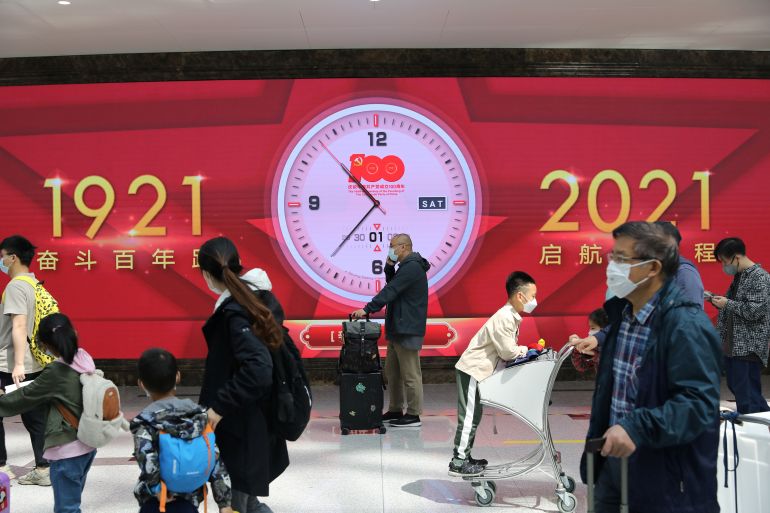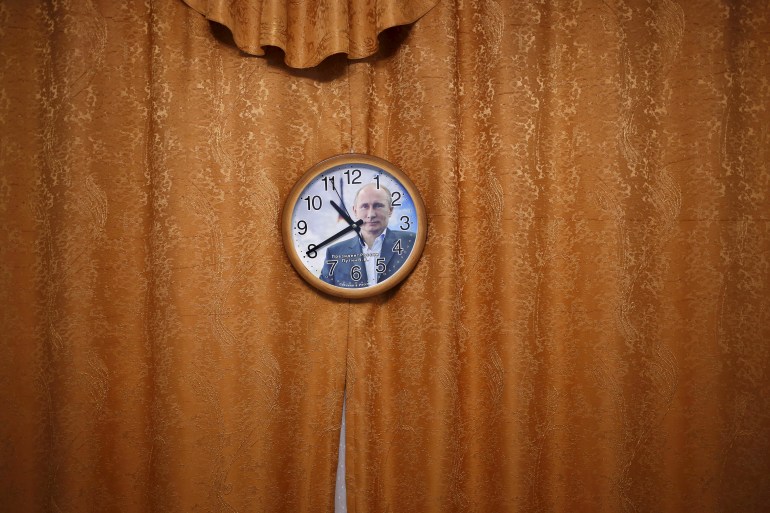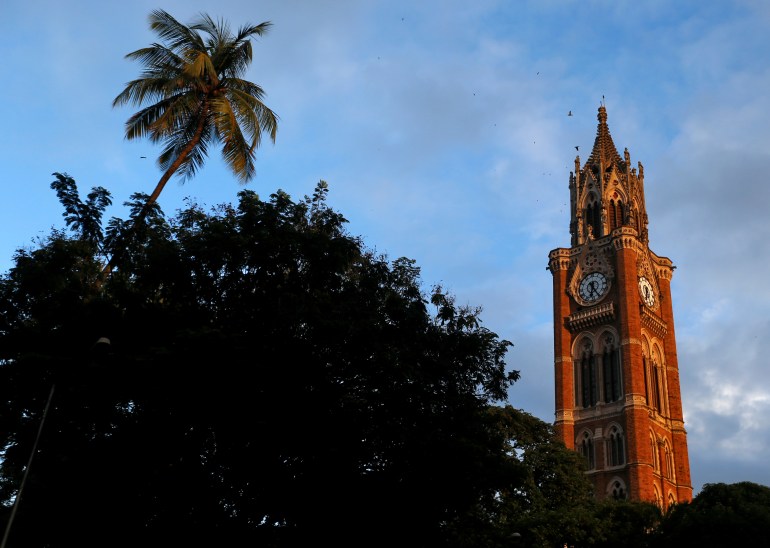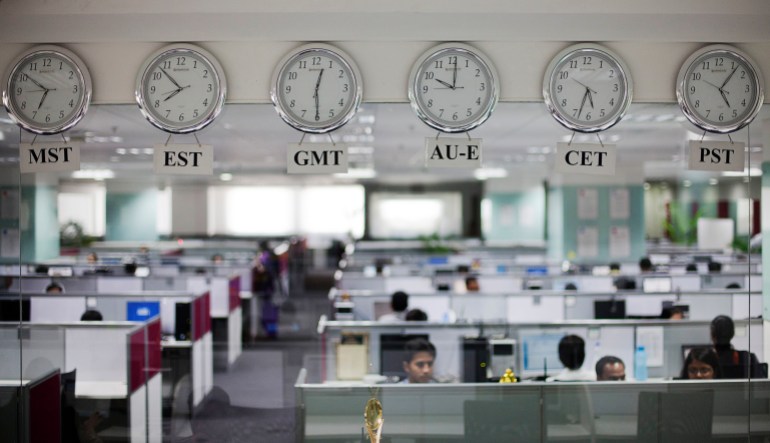Conflict over clocks: China among countries where time is political
Keeping of time in Asia has often been subject more to the geopolitics of time zones than considerations of geography.

When Nuria Shamsed* was a child, she would sit with her family in front of her grandparents’ house on the outskirts of the Western Chinese city of Kashgar in the Xinjiang region and watch the summer sun set at about midnight.
Kashgar is not located particularly far north – it is approximately at the same latitude as the Turkish capital, Ankara, where sundown is several hours earlier.
Keep reading
list of 4 itemsOutrage as UN debate on China’s alleged Xinjiang abuses rejected
UN members condemn China over abuse of Uighurs in Xinjiang
New UN rights chief vows to engage Beijing on Xinjiang findings
But the sun goes down late in the Kashgar night because the Chinese Communist Party decided that all of China must operate in the same time zone as Beijing.
This means that clocks in Kashgar are about three hours ahead of the time that the city’s geographical location actually dictates.
“The midnight sunsets with my family are among the fondest memories I have from my childhood in Xinjiang,” 26-year-old Shamsed told Al Jazeera, speaking from her new home in San Diego, California, the United States.
“But at the same time, the phenomenon also shows how the Chinese authorities want to control everything in Xinjiang – even our time,” she said.

Time is political in China, says Yao-Yuan Yeh, who teaches Chinese history and politics at the University of St Thomas in Houston, the US, and is used to instil a sense of interconnection and control.
“It is used to reinforce the official narrative of a Chinese nation united under the rule of the Communist Party,” Yeh explained.
Time zones are constructs that are constantly being renegotiated, and in few places has this been more true than in China and elsewhere in Asia.
State control through time
For as long as 56-year-old Payzulla Zaydun can remember, time has been a point of contention between the Uighurs in Xinjiang and the authorities in Beijing.
Xinjiang’s provincial capital, Urumqi, is geographically two hours behind Beijing, and Zaydun recounts that when he attended university in Urumqi in the 1980s and 1990s, some of his fellow Uighur students deliberately arrived two hours late for class if classes were only listed in Beijing time.
“They believed that Xinjiang time should be used in Xinjiang, and there was a sense that as an Uighur there was a responsibility to uphold the local time,” Zaydun told Al Jazeera from Maryland in the US.
Therefore, many local shops and businesses in Urumqi also opened and closed following a two-hour time difference in adherence to the local time over Beijing time.
However, that is not the case any longer.
Upholding the local time in Xinjiang is much more difficult today, Zaydun says.
“If you openly challenge the Beijing time now, you can be prosecuted for subversion,” he says.
“My elderly mother never used Beijing time before, but then a few years ago she suddenly started using Beijing time when we talked on the phone because she feared the consequences if she didn’t.”
Canadian-Uighur activist Rukiye Turdush says enforcing the use of Beijing time in Xinjiang is just one of many ways the Chinese authorities are trying to dilute the Uighur identity, alongside means such as social control, large-scale surveillance and mass detentions.
“Language, religion, culture, space and time are all elements of the Uighur national identity that the Chinese are trying to tear apart in Xinjiang,” Turdush says.
Other minorities in China are also experiencing that the keeping of time is the strict preserve of China’s central authorities.
“For other minorities in China’s outer regions such as the Tibetans and the Mongolians time is also controlled from Beijing,” says Yeh of the University of St Thomas.
Although there are practical and economic advantages to a single time zone, the impetus for standardisation was more about a signal the Chinese Communist Party wanted to send when it came to power in 1949.
“The Chinese state did not exercise full control over China before 1949, but the Communists sought to change that in order to consolidate and legitimise their power in China,” Yeh explains.
In pursuing that mission, controlling time became part of an official narrative about a China united under the party’s rule, which spurred the creation of a single time zone that temporally aligned the entire country with Beijing.
Under President Xi Jinping, who came to power in 2012, there has been a renewed focus on assimilating China’s minorities into the dominant Chinese culture promoted by the Communist Party.
“Due to that, the authorities have taken a tougher stance against any kind of separatist notions among the minority groups, including any ideas about belonging to a separate time zone,” Yeh says.
Time is sovereignty
China is not the only place where time is shaped more by politics than by geography.
One look at the jigsaw puzzle that constitutes the world’s distribution of time zones clearly indicates this and recent events in Ukraine are a case in point.
In January, Russian authorities announced that annexed regions of Ukraine were to switch from Ukrainian time to Moscow time.

In March, Greenland also moved one hour closer to Europe.
Time can also be used by minorities to fight back against state power.
During the 25-year-long civil war in Sri Lanka between the central government and the Tamil Tigers, the government introduced a time change that set the country’s clock back half an hour. However, the Tamil Tigers refused to recognise and implement the change in 1996 in the areas of the island under their control, meaning Sri Lanka effectively existed in two different time zones simultaneously.
Just as time is used politically within the borders of nations, it is also used politically between the borders of nations.
In 2015, the North Korean government announced that the country would change its time zone by setting clocks back half an hour.
The shift was defended as a belated reckoning with Japanese imperialists that had deprived Korea historically of its time – a reference to the early 20th century when the Japanese, as Korea’s then-colonial rulers, brought the country into the same time zone as the Empire of Japan.

In fact, the establishment of modern timekeeping traces its roots back to the colonial era and it was the world’s colonial powers that confirmed the global time zone system during a conference in the US in 1884, according to Karl Benediktsson, who has studied the connection between politics and time zones at the University of Iceland.
According to Benediktsson, it is revealing that the modern time zone system is based around the so-called Greenwich meridian, or the prime meridian, which runs through Greenwich in London.
“The prime meridian could technically have been placed anywhere, but it was centred around London because Great Britain was the leading power at the time,” Benediktsson says.
While the time zone system established by Britain and the other colonial powers in the 19th century remains largely the same as the system still in use today, the division of the world within time zones has changed frequently since the dismantling of Europe’s colonial empires.
And the repositioning of postcolonial states on the world map has also led to some new and novel time zones.

For example, when India gained independence from Britain in 1947, it abolished Mumbai time and Kolkata time and established Indian time as the country’s only official time.
Nepal has aligned its own time zone with the peak of the sacred Gaurishankar Mountain, located east of Kathmandu, which places the country within a quarter-hour time zone unlike most other states that position their time keeping within a certain hourly time zone or more rarely within a half-hour time zone.
Time zones are constructed
The jigsaw puzzle that makes up the map of time zones across borders and around the world reflects the many political considerations and histories at play in the creation of clock time.
Shifting geopolitical circumstances also means that the world’s time zone puzzle will likely continue to change into the future, according to the University of Iceland’s Benediktsson.
“I usually say that time zones are social constructions,” says Benediktsson, noting that the placement of countries within certain time zones was determined by people and can therefore be changed by people over and over again.

Reflecting back on her youth and observing the sun set at midnight during summer time in her native Kashgar, Nuria Shamsed believes that the enduring difference between local time and Beijing’s official time in Xinjiang demonstrates the power of people over timekeeping.
Attempts to deny the observance of local time is another tool to deprive Uighurs of their identity, Shamsed says.
“Time should not be a tool used by authoritarians to pursue their imperialist ambitions,” she says.
“I also consider it a human rights violation when Uighurs in Xinjiang do not have a say in what time defines their lives.”
*Nuria Shamsed is a pseudonym created to respect the source’s request for anonymity due to the sensitivity of the topic.